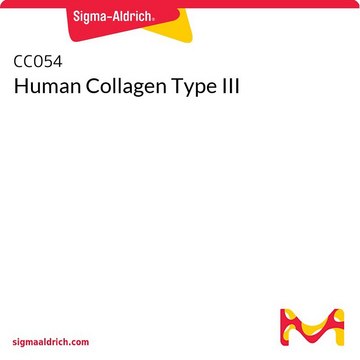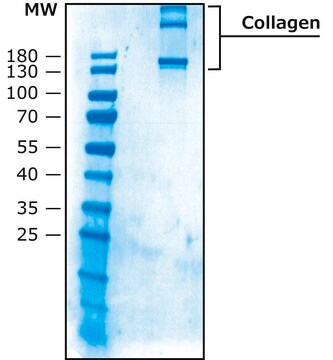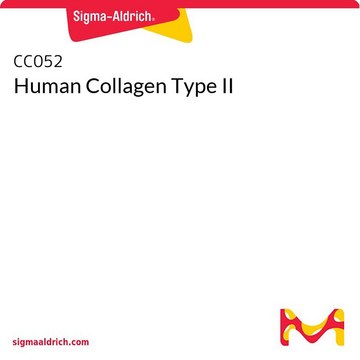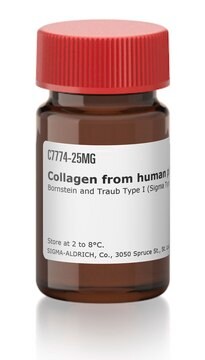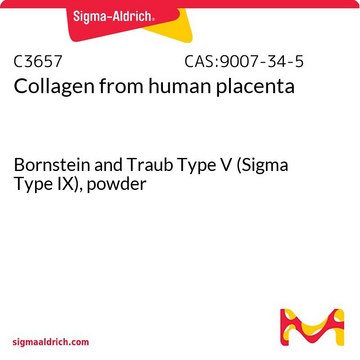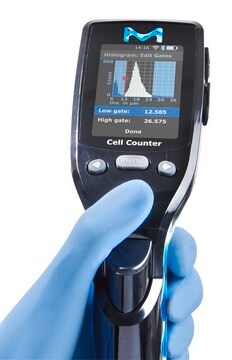CC054-M
Human Collagen Type III
Synonyme(s) :
alpha 1 Type III Collagen
About This Item
Produits recommandés
Source biologique
human
Niveau de qualité
Pureté
90% (SDS-PAGE)
Forme
liquid
Fabricant/nom de marque
Chemicon®
Technique(s)
cell culture | mammalian: suitable
Impuretés
<1% human collagen types II, IV-VI, and non-collagen proteins
<10% human collagen type I
Entrée
sample type: human embryonic stem cell(s)
sample type pancreatic stem cell(s)
sample type mesenchymal stem cell(s)
sample type neural stem cell(s)
sample type hematopoietic stem cell(s)
sample type induced pluripotent stem cell(s)
sample type epithelial cells
Numéro d'accès NCBI
Numéro d'accès UniProt
Description générale
Forme physique
Stockage et stabilité
Remarque sur l'analyse
Informations légales
Clause de non-responsabilité
Code de la classe de stockage
12 - Non Combustible Liquids
Classe de danger pour l'eau (WGK)
WGK 2
Point d'éclair (°F)
Not applicable
Point d'éclair (°C)
Not applicable
Certificats d'analyse (COA)
Recherchez un Certificats d'analyse (COA) en saisissant le numéro de lot du produit. Les numéros de lot figurent sur l'étiquette du produit après les mots "Lot" ou "Batch".
Déjà en possession de ce produit ?
Retrouvez la documentation relative aux produits que vous avez récemment achetés dans la Bibliothèque de documents.
Notre équipe de scientifiques dispose d'une expérience dans tous les secteurs de la recherche, notamment en sciences de la vie, science des matériaux, synthèse chimique, chromatographie, analyse et dans de nombreux autres domaines..
Contacter notre Service technique